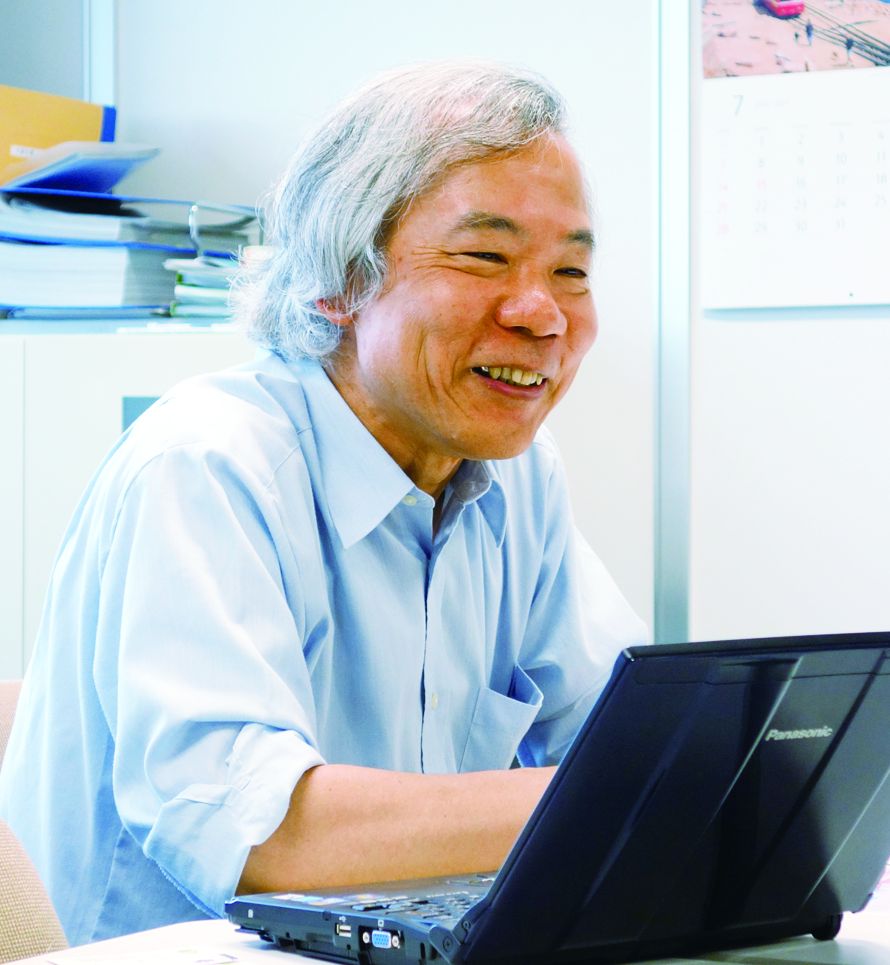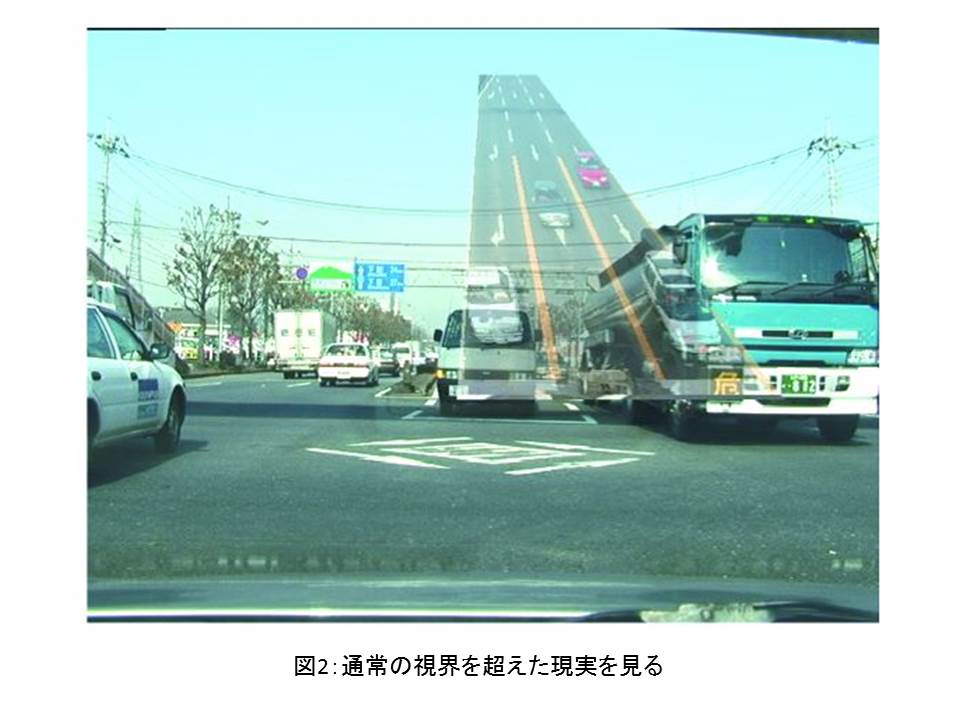キーワード:複合現実感、自由視点映像、拡張現実、コンピュータビジョン、コンピュータグラフィックス
http://www.image.iit.tsukuba.ac.jp/
 視覚は脳が外界の情報を獲得する上で最も重要なチャンネルと言われています。最新のコンピュータビジョンとコンピュータグラフィックスを融合させた視覚情報技術の発展により、私たちは今まで見られなかったものを視ることができるようになりました。三次元リサーチユニット「視覚情報メディア」では、人の目を代替する機械ではなく、人の目を支援する機械を創る研究をしています。
視覚は脳が外界の情報を獲得する上で最も重要なチャンネルと言われています。最新のコンピュータビジョンとコンピュータグラフィックスを融合させた視覚情報技術の発展により、私たちは今まで見られなかったものを視ることができるようになりました。三次元リサーチユニット「視覚情報メディア」では、人の目を代替する機械ではなく、人の目を支援する機械を創る研究をしています。
自由視点のサッカースタジアム
視覚情報メディアは、我々の日常生活のQuality of Lifeに重要な役割を果たしています。ここに、最先端のコンピュータ技術を組み合わせると、例えば、サッカーのスタジアムを360度自由な視点から観ることができる新しい視覚情報メディアを実現できます(図1)。10台程度のカメラで撮影した映像を加工して、リアルタイムで任意の視点からの映像を作成できるのです。この技術を使うことで、死角を捉えた映像を作成して人の判断を支援することもできるようになります。

ARの技術で人を支援!
このほかにも、拡張現実の研究も行っています。AR(Augmented Reality)と呼ばれている技術で、現実の世界にコンピュータで生成した仮想世界の映像を重畳して、人の目を支援できないか、と考えています(図2)。例えば、自動車を運転していて右折しようとしたとき、対向車線にも大きなトラックが右折しようと止まっていると、トラックの後ろから対向車が来ているのが見えませんが、交差点カメラの映像を使えば、運転者に対向車を見せることが可能になります。コンピュータの中だけでなく、実際の環境下での実験も視野にいれ、情報技術の開発に取り組んでいます。

社会への貢献・実績
● 自由視点映像生成の研究(民間企業との共同研究)
● 第21回パターン認識国際会議(ICPR2012)の開催
(取材:平成25年7月1日)
Creation of devices to support but not replace human eyes
Key words:mixed reality, free-viewpoint video, augmented reality, computer vision, and computer graphics
The sense of vision is believed to be the most important to acquire external information. Progress in visual information technologies integrating the most advanced computer vision and graphic systems has allowed us to see things that could not be seen in the past. The 3-D research unit: “Visual information media”, conducts research to create devices designed to support but not replace human eyes.

Free-viewpoint virtualized soccer stadium
For example, patient rooms are allocated in consideration of various factors such as the relevant clinical department and requested room type (standard/private). Currently, in the University of Tsukuba Hospital, a manual room allocation procedure is being implemented, taking much time and effort. We are considering the semi-automation of this procedure, using technology for mathematical optimization, to reduce the manual labor needed for patient room management. This may enable doctors and nurses to concentrate on their treatment and nursing duties, and consequently provide patients with more satisfactory services. As a part of this system, visually sophisticated and easy-to-use software for tablets has already been developed (Figure 3).
Enhancing the Productivity and People’s QOL by Innovating Service Operations
The patient room management system we are developing is based on empirical research combining management, mathematical, and information sciences. It is possible to mathematically examine the efficiency by adopting such a new scientific approach in the service industry. Furthermore, logical analysis enables us to impartially identify the points for improvement based on numerical values rather than by experience or intuition. We aim to enhance people’s QOL by examining the satisfaction levels of both service providers and recipients in addition to the increasing in productivity.

Figure 1: New visual information media to allow users to view a soccer game from various angles
AR technologies to support people!
The research unit also conducts research on augmented reality (AR). This technology is expected to augment the eyes of a person by superimposing virtual images generated using a computer on images of the real world (Figure 2). For example, when both your car at an intersection and a large truck in the opposite lane are going to turn right, you cannot see an automobile coming closer behind the truck. However, a camera focused on the intersection can provide drivers with images of automobiles in the opposite lane. The research unit also conducts experiments in actual environments, in addition to computer simulations, to develop information technologies.

Figure 2 : A view of the real world that is not possible with a normal field of view
Social contributions and achievements
● Research on the creation of free-viewpoint video (joint research with a private company)
● Organization of the 21st International Conference on Pattern Recognition (ICPR2012)
